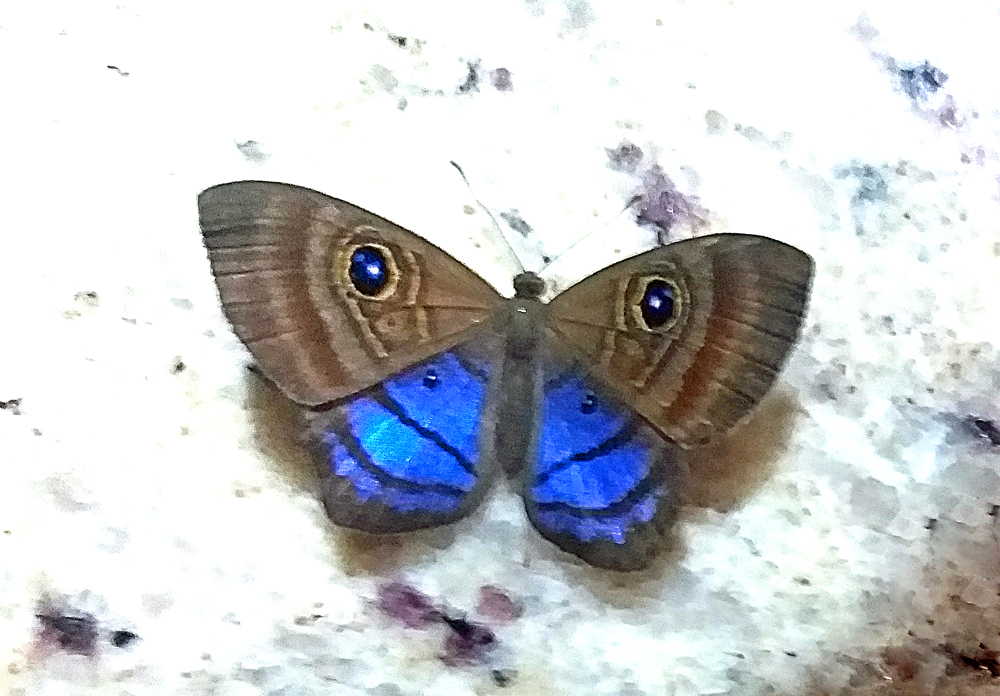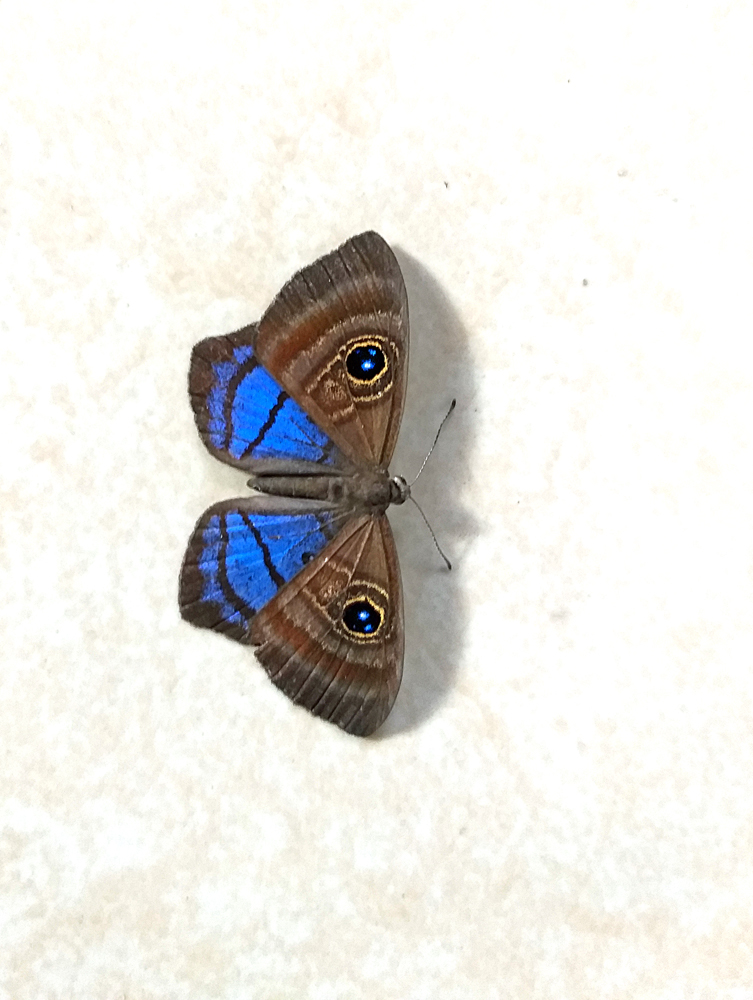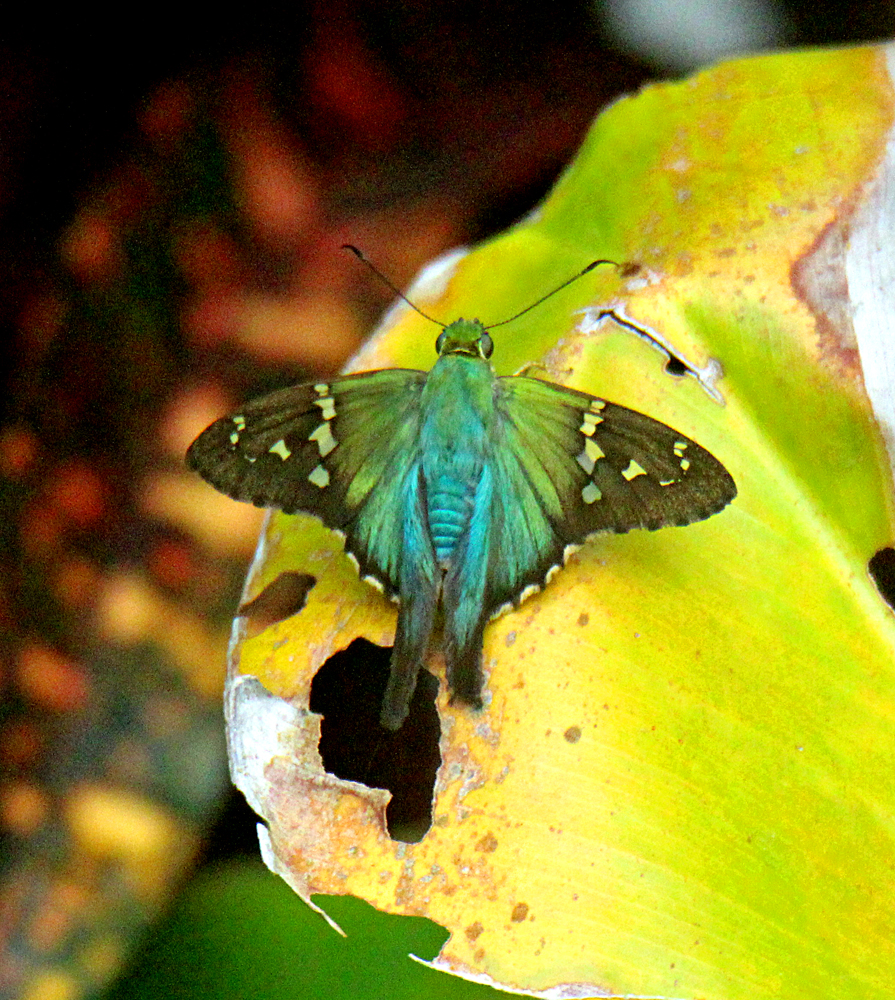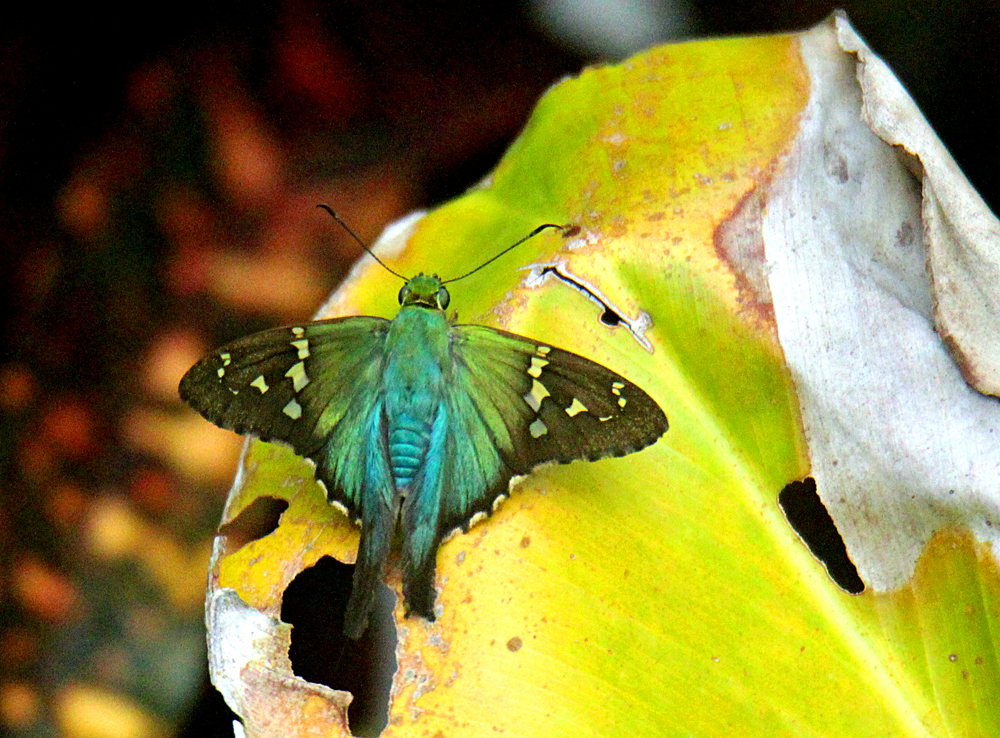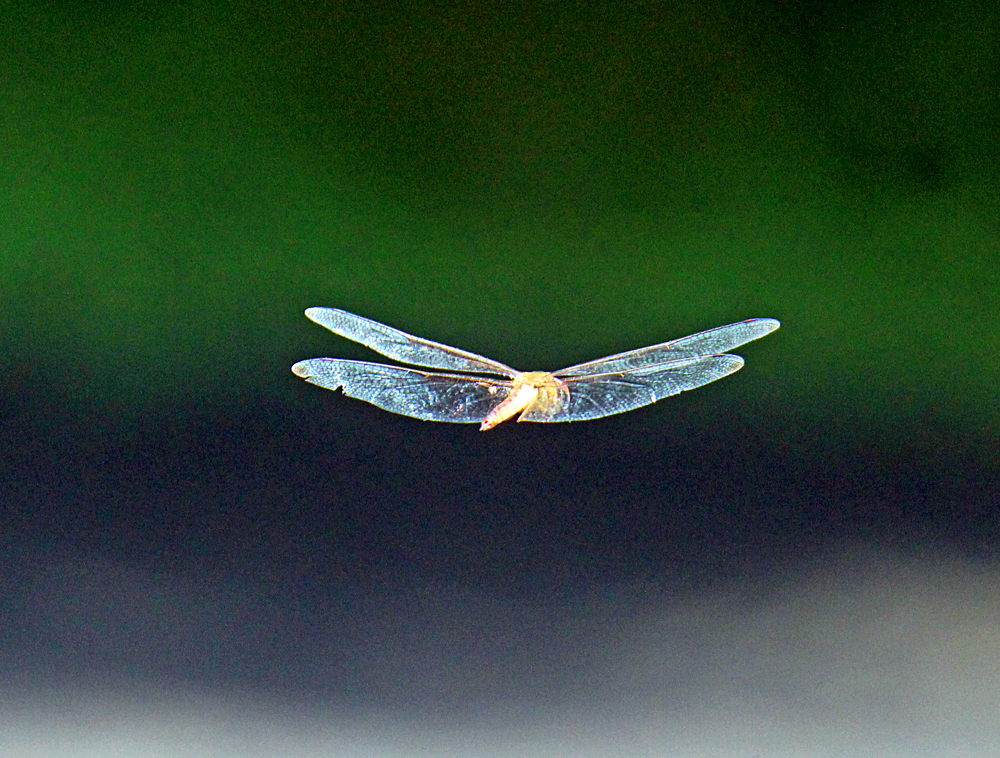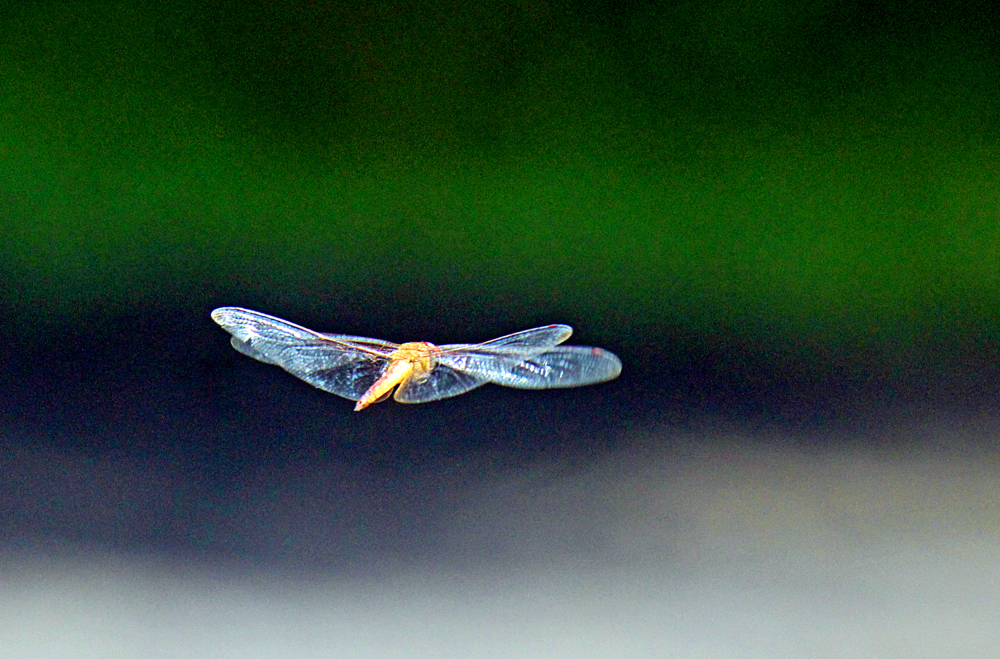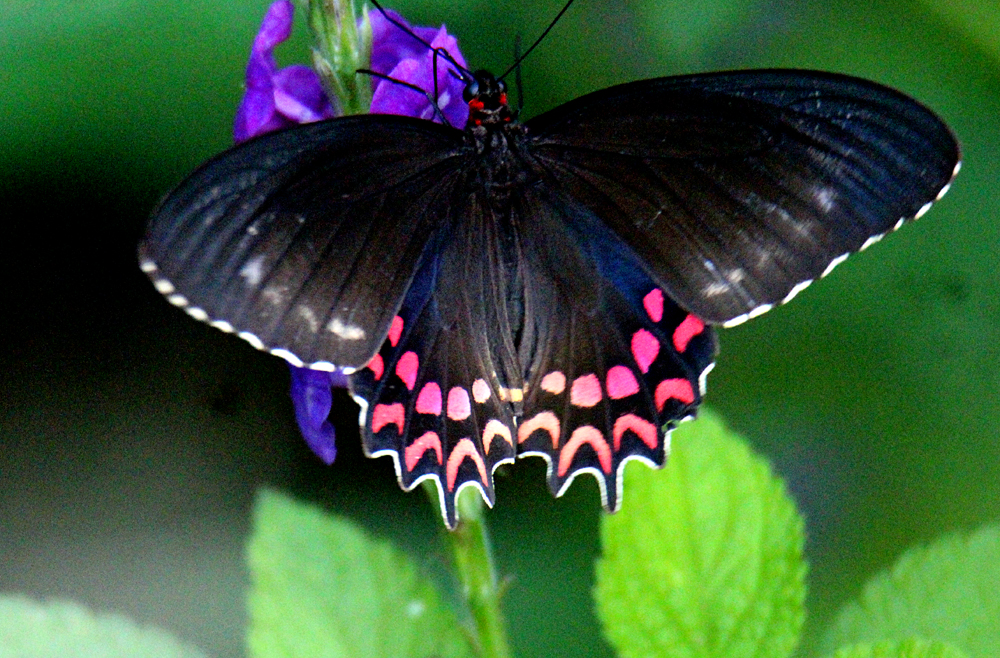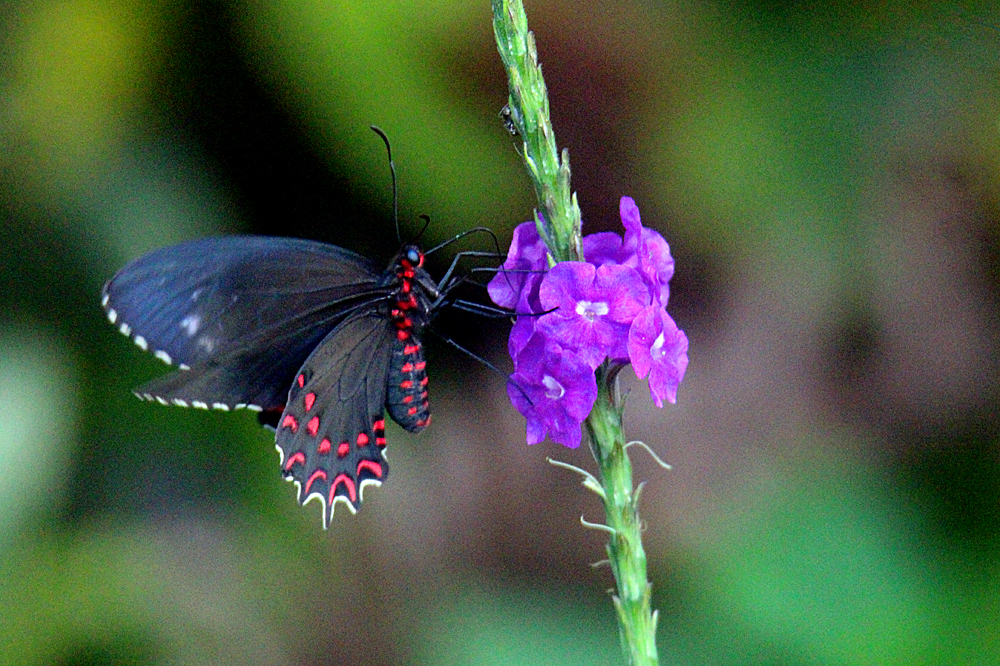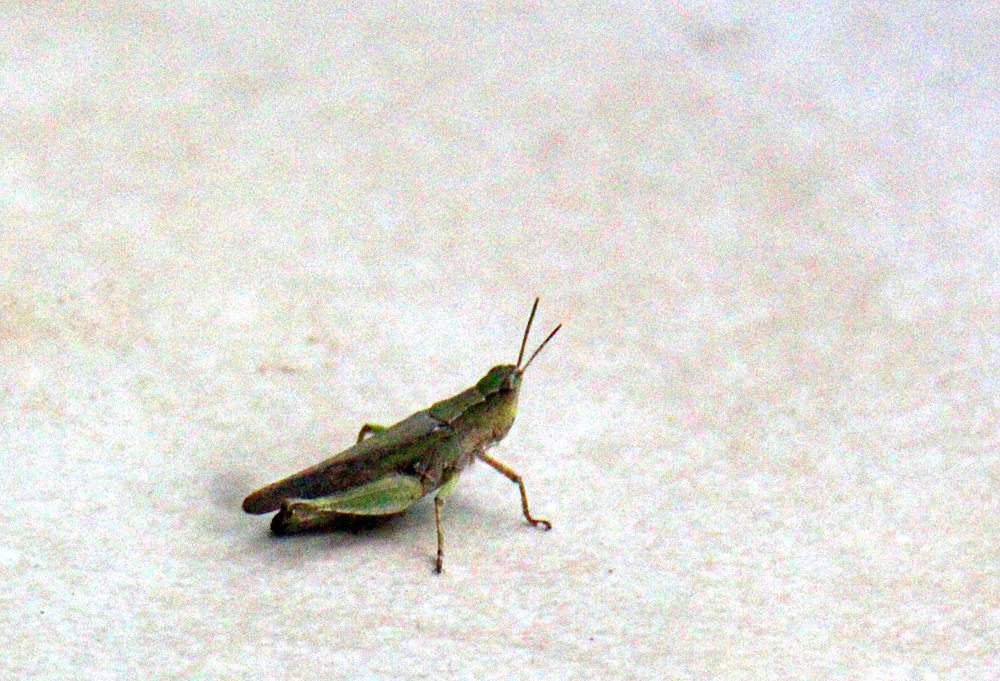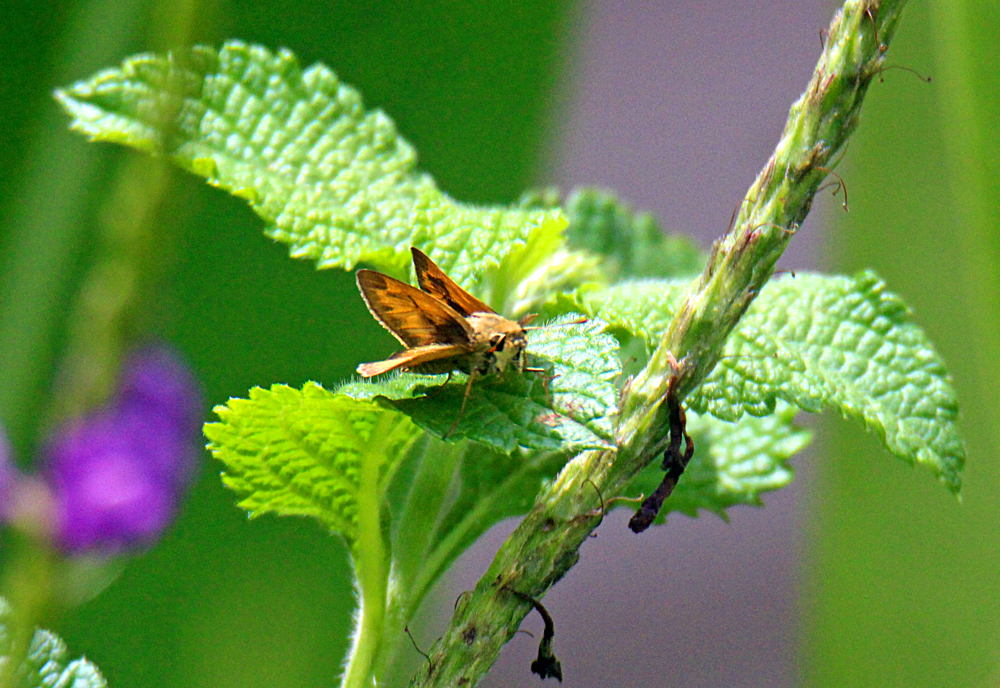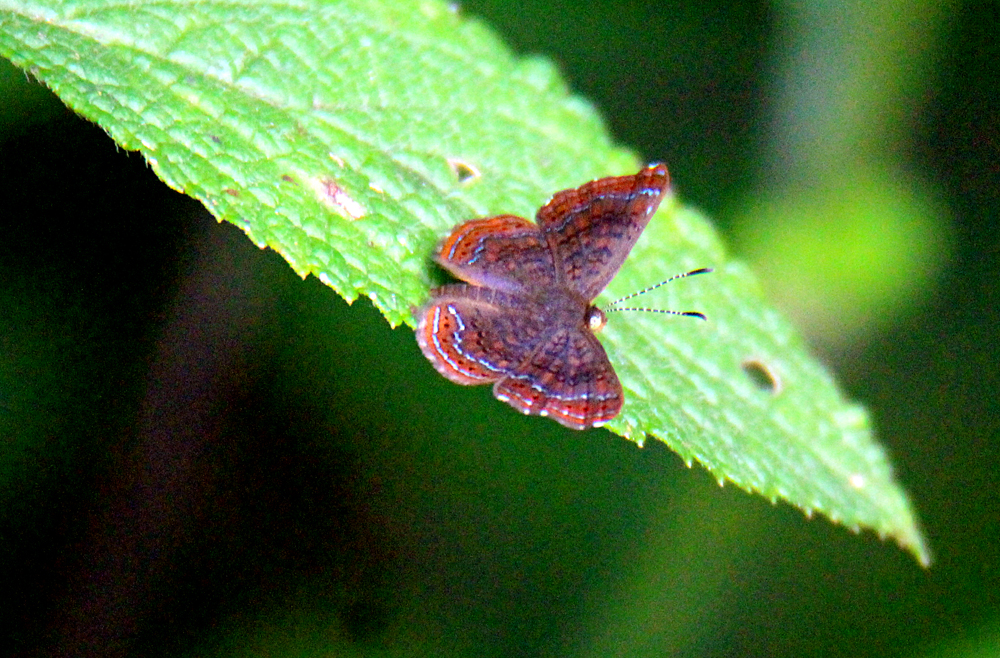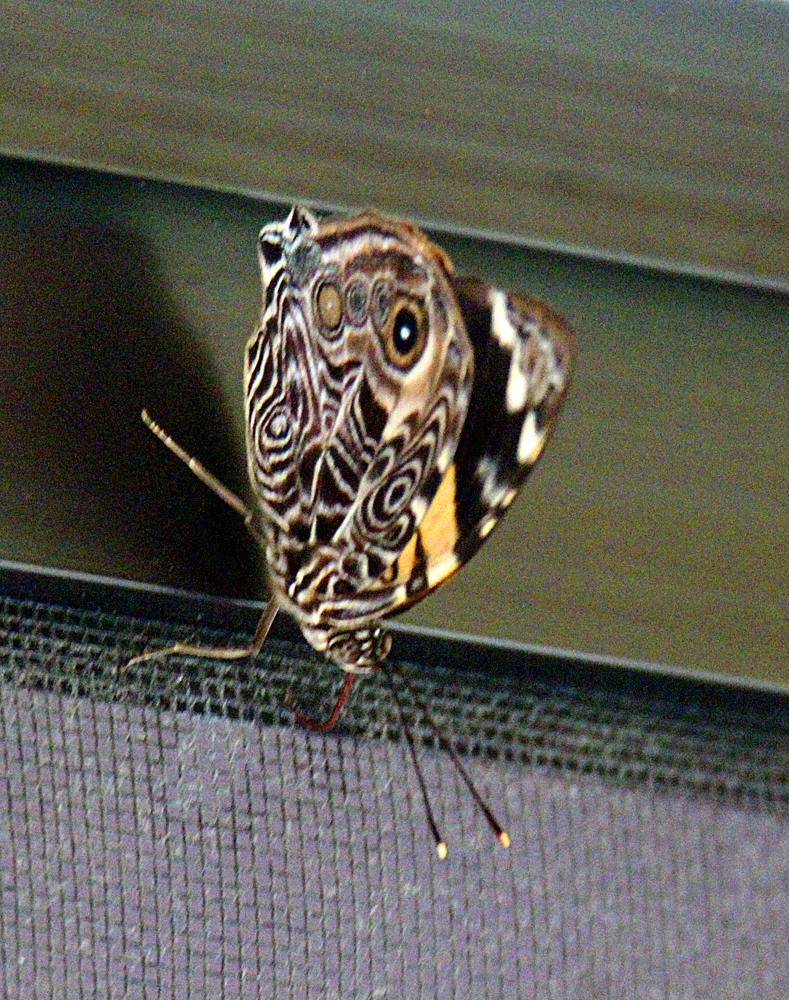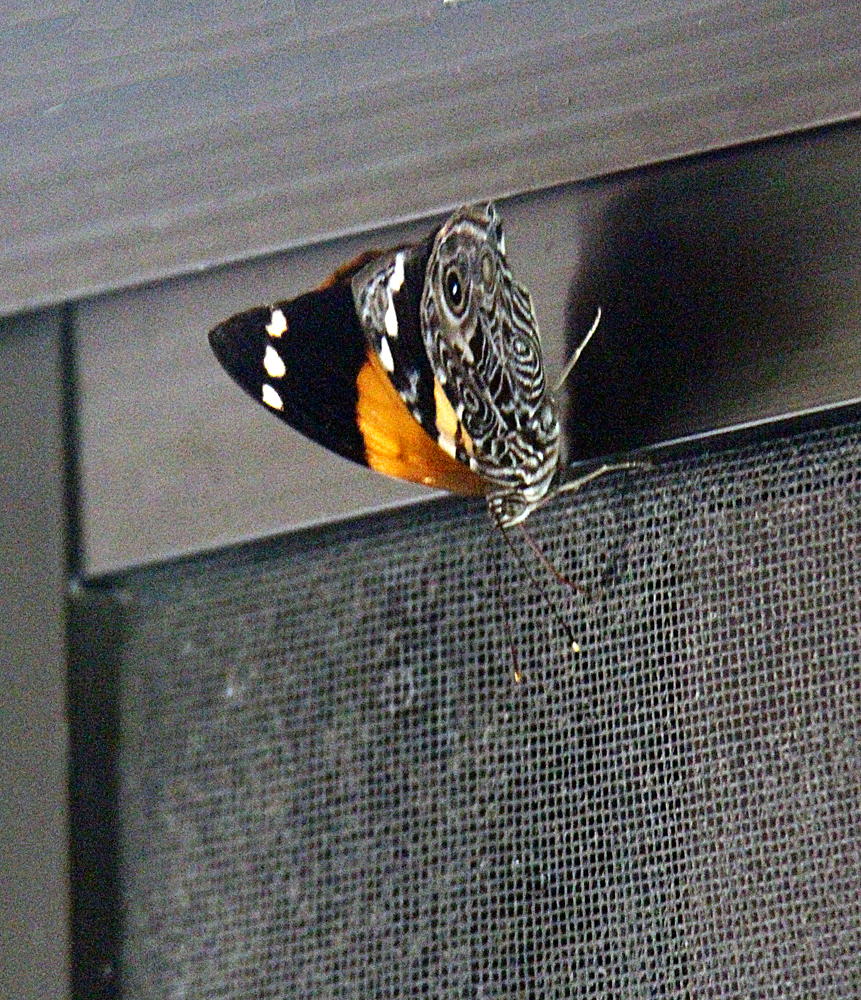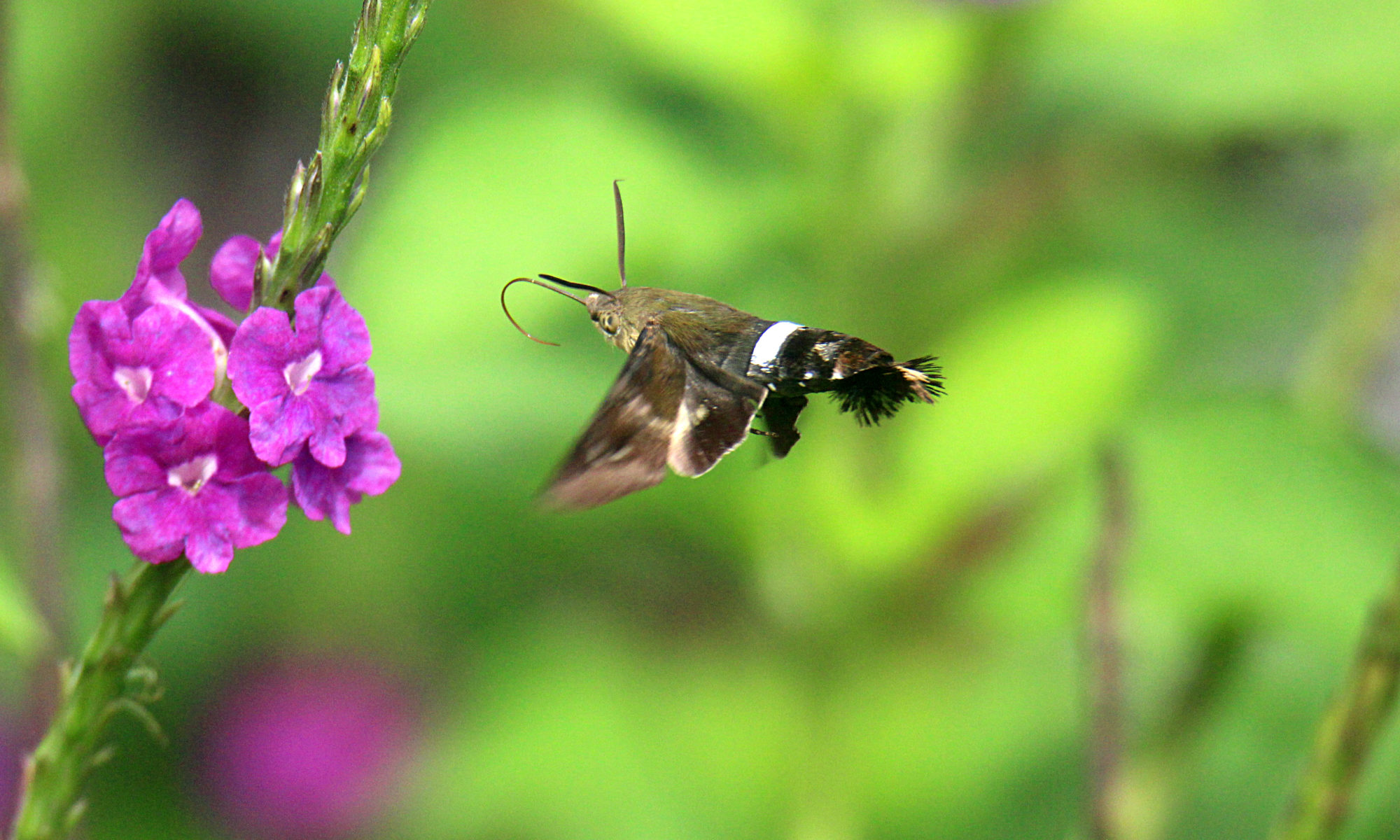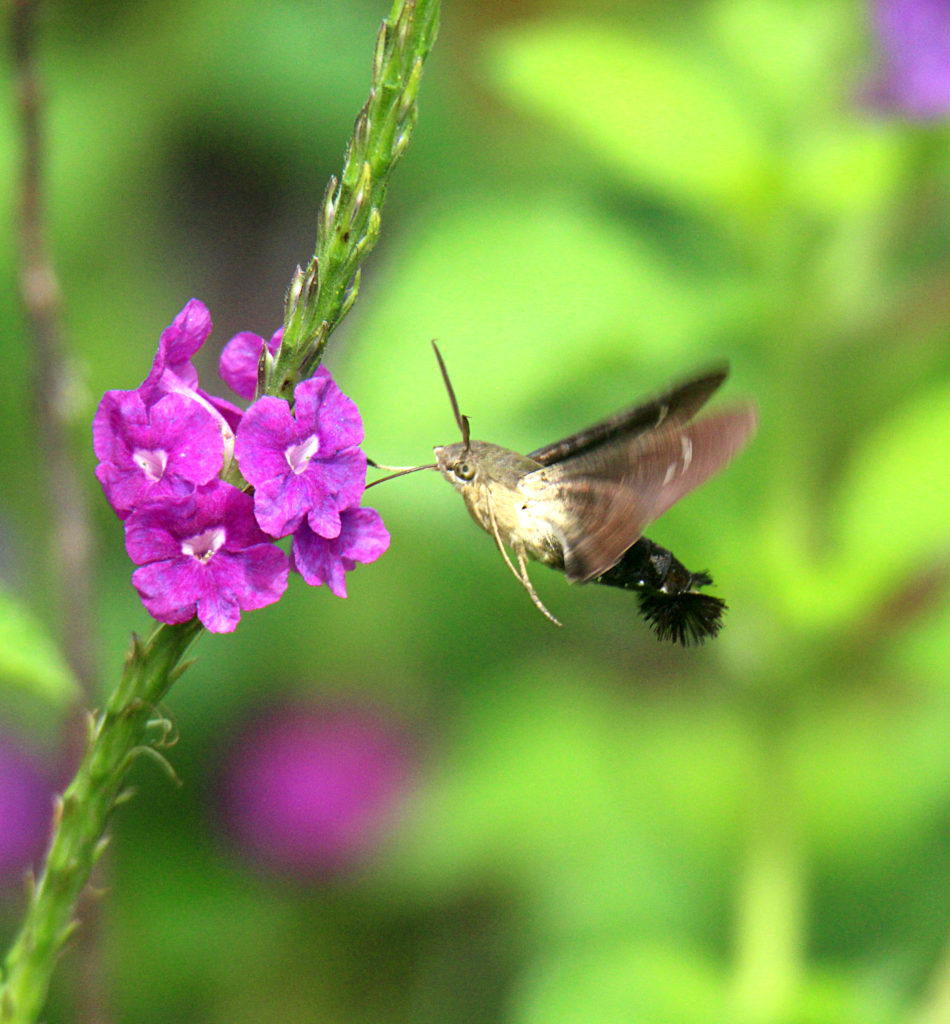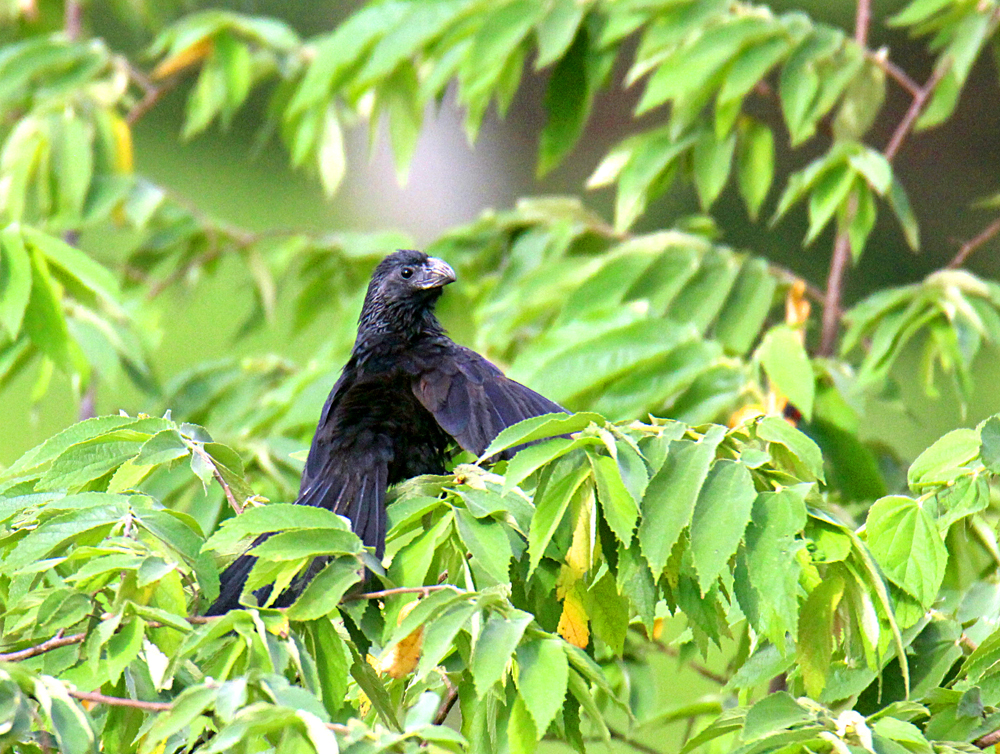At 1.5 inches wide, wing-tip to wing-tip, this one is smaller than my earlier similar “Blue-patched Eyed-Metalmark/Eyemark” and a whole lot smaller than an even earlier “Blue-winged Sheenmark,” all of similar design and colors. I’m thinking this one may be a sub-species of the “Purple-washed” or a new species “I’ve discovered” 🙂 because of two differences from the other purple-washed photos online and in my book:
The book does say that the “Purple-washed” color can be blue instead of purple (like mine) but (1) in the other photos “the wash” (blue or purple) is bleeding into the forward wings (this one doesn’t) and (2) none of the others have the tiny black “almond eyes” on the top of the hind-wing blue or purple like this one. Otherwise it is identical to the Purple-washed Eyed-Metalmark photos in the book and online at ButterfliesOfAmerica and a few of other sites. Maybe another evolutionary change or sub-species? The scientific name is Mesosemia lamachus, if this is what I photographed. 🙂 If not, I’m hoping someone can give me the correct identification. This Mesosemia lamachus is on page 63 of the Second Edition of the Swift Guide to Butterflies of Mexico and Central America for anyone wanting to follow-up on it and also on the BOA link above. 🙂
There are so many amazing creatures here in Costa Rica that seem to appear from nowhere some days! 🙂 This one appeared in my kitchen last Saturday night as I was preparing dinner and I tried to photograph him in the poor house light at night, first with my cellphone (which did better) and then with my SLR and zoom lens from a distance. Here’s four shots of another tiny butterfly of which I’m not positive of the ID.
